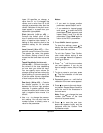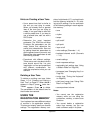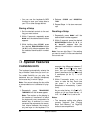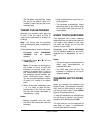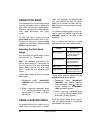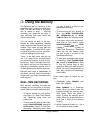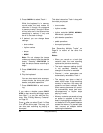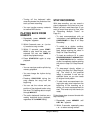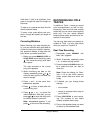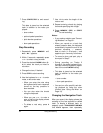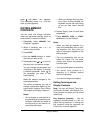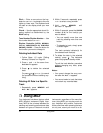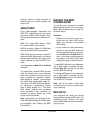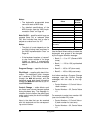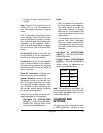
30
Using the Memory
3. Press
CHORD/1
to select Track 1.
4. If desired, you can change these
settings:
• rhythm number
• tempo
•
MODE
5. Press
STEP
to start recording.
6. Press
SYNCHRO/ENDING
, then play
a chord.
• Use the chord play method deter-
mined by the current
MODE
set-
ting (Fingered, Concert Chord,
Full Range Chord, or Normal).
• When
MODE
is set to
NORMAL
,
specify the chord using the root
keys and chord-type keys. See
“Specifying Chords in the Normal
Mode”.
7. Use the number buttons to specify
the length of the chord. See “Speci-
fying the Length of a Note”.
8. For each additional chord you want
to enter, play the chord and use the
number buttons to specify its length.
9. When you finish recording, press
MEMORY
,
STEP
, or
START/ STOP
.
To play back the song, press
START/
STOP
.
Notes:
• To correct entry mistakes, see “Edit-
ing Memory Contents” on Page 33.
• When you record on a track that
already contains data, the keyboard
automatically locates the end of the
previous recording — measure,
beat, or clock (
1
/
48
of a beat) — and
adds your new entry to it.
• You can enter a 0 (a rest) in Step 6,
but the rest is ignored when the
accompaniment plays.
• The rhythm number and
INTRO
,
SYNCHRO/ENDING
,
NORMAL/FILL-
IN
, and
VARIATION/FILL-IN
opera-
tions are stored on Track 1, along
with the notes you played.
See “Recording Multiple Tracks” on
Page 31 to record on the other five
tracks.
Specifying Chords in the
Normal Mode
To enter chords when
MODE
is set to
NORMAL
during step recording, you
must specify them using a method other
than Concert Chord or Fingered. That
way, you can enter 18 chord types using
only two keys.
While holding down the desired chord
root key, press the chord key to specify
the chord.
The root and chord types are labeled
above each key. The chord root letter
and type of chord also appear as you
play a chord.
Specifying the Length of a Note
During step recording, use the number
buttons (or
+
or
–
) to specify the length
of each note.
Use numbers
1
through
6
to specify
whole notes (
1
), half notes (
2
), quarter
notes (
3
), eighth notes (
4
), 16th notes
(
5
), and 32nd notes (
6
).



